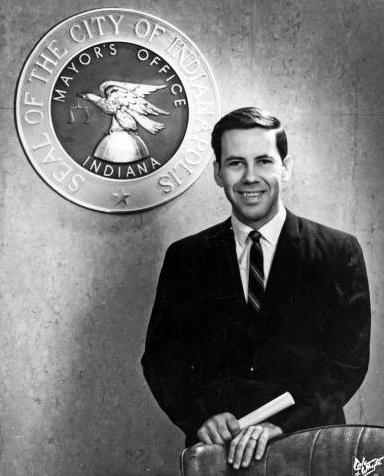The mayor of Indianapolis is the head of the executive branch of city and county government and is elected by all voters in the county to a renewable four-year term. Because of , the mayor of Indianapolis is also the Marion County Executive, a role held by the County Commissioners in the other 91 Counties in Indiana. The mayor’s salary is fixed by the , and vacancies in the office are filled by a temporary appointment approved by the council.

As the head of the city’s executive branch, the mayor’s office maintains six different departments as well as six city offices. The responsibilities of the office include: enforcing city ordinances and state laws; appointing, supervising, and removing heads and employees of city government departments, agencies, and divisions; appointing, supervising, and removing deputy mayors, with appointments subject to City-County Council approval; reviewing and either approving or disapproving, in writing and within 10 days, ordinances or appropriations passed by the City-County Council, with the mayor’s vetoes subject to being overridden by a two-thirds vote of the councilors; communicating and coordinating with the City-County Council and the Marion County Commissioners concerning the financial condition and budget of the city and county; and setting the salaries of city officers and employees, subject to City-County Council approval for salaries of police and fire employees.
The mayor can veto individual items in budgetary appropriations passed by the City-County Council, but this veto power does not extend to the funds for the constitutionally required county offices of auditor, coroner, prosecutor, recorder, sheriff, surveyor, and treasurer, or to the Marion County courts, or to the independent municipal corporations: the , the , and the of Marion County.
The office of mayor experienced several changes from the mid-1960s through the mid-1980s, especially because of the 1969-1970 Unigov reorganization of local government in Marion County. During the 1800s Indianapolis mayors served two-year terms but could be reelected. At the turn of the century, the mayor’s term was extended to four years, but the mayor was barred from seeking reelection to another term. The restriction against serving consecutive terms weakened the office politically.
The expansion in the number of appointed boards and commissions responsible for local public services also weakened the mayor’s office. By the early 1960s, the Indianapolis mayor could appoint only a fraction of the board members responsible for such key public services as parks, thoroughfares, libraries, public health, and major public works such as the airport and the . In 1964 the Indiana General Assembly modified the laws governing first-class cities such as Indianapolis and permitted the mayor to serve two consecutive terms.
In 1983, state legislation, known popularly as the “Hudnut forever” bill, lifted this restriction on the number of consecutive terms, and Indianapolis mayors, along with other mayors in Indiana, currently may serve an unlimited number of terms. (William Hudnut ultimately served four consecutive terms as mayor.) The mayor’s ability to seek reelection adds to the political power of the office since a mayor’s days in office are no longer numbered from the moment he or she takes the oath. Unigov added considerably to the powers of the mayor’s office. The mayor is the chief executive of the Marion County government as well as the Indianapolis city government.
This dual role accounts for the fact that the Indianapolis mayor is chosen by all voters in Marion County, even from the “” that separately elect mayors of their own. Unigov also brought some local agencies that had been separate municipal corporations within a “cabinet” of departments under the mayor’s control and extended the mayor’s authority over county and city financial affairs. An update to Unigov, passed by the Indiana General Assembly in 2005, gave the mayor more authority over county offices’ finances and budgeting functions. The original Unigov law also provided for the mayor to appoint one or more deputy mayors, subject to City-County Council approval, and to define their duties.
The mayors who have served since 1970 have assigned the responsibilities of deputy mayors in slightly different ways, but generally, there has usually been one deputy mayor whose primary responsibility is handling the city and county’s relations with the federal, state, and other local governments, and at least one other deputy mayor whose primary responsibility includes some aspect of city and county policies or services. For example, there were three deputy mayors during the last term of Mayor , and two during the first years of the .
Mayor had a chief deputy mayor, a deputy mayor of policy, a deputy mayor of neighborhoods who later became a deputy mayor for public and neighborhood affairs. Mayor Greg Ballard included a deputy mayor for education and one for economic development on his staff. Mayor had a chief of staff in addition to a chief deputy mayor, and deputy mayors for neighborhood engagement, community development, and economic development.
With these changes, the mayor’s office has emerged as a crucial, central position of leadership in local politics and local government in Indianapolis and Marion County.

Help improve this entry
Contribute information, offer corrections, suggest images.
You can also recommend new entries related to this topic.

